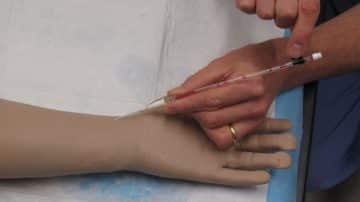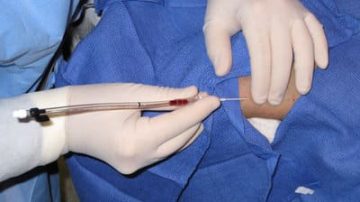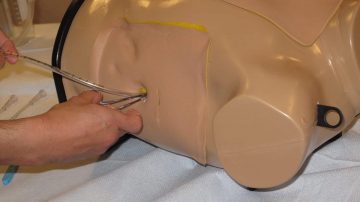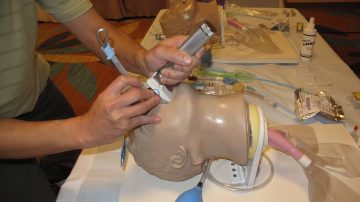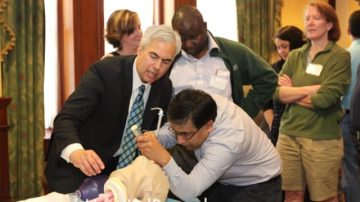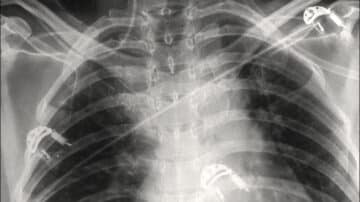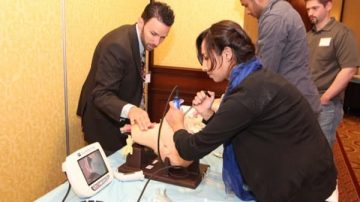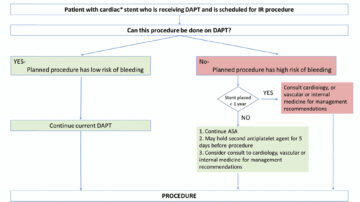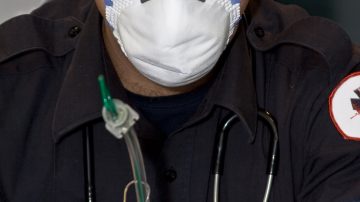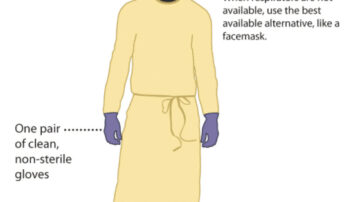Aggressive fluid administration is a hallmark of septic shock management and has been espoused by the Surviving Sepsis Campaign and is a part of the CMS SEP-1 sepsis bundle. The sepsis bundle includes administration of 30 ml/kg crystalloid bolus (LR…
Read MoreIt has long been Dogma that an abnormal modified Allen’s test is a contraindication to performing a radial arterial line in that arm. The theory behind this is that the modified Allen’s test will identify patients who have insufficient collateral circulation…
Read MoreThe Society of Critical Care Medicine (SCCM) recommends that all mechanically ventilated patients receive analgesia, sedation, and delirium assessment and management while intubated. SCCM reinforced these principles in their 2018 clinical practice guideline on the prevention and management of pain,…
Read MoreA systematic review and meta-analysis of randomized controlled trials was conducted to determine the effects of protocolized sedation in mechanically ventilated adult intensive care unit patients. Six randomized controlled trials and 1243 patients were studied. The results showed that protocolized…
Read MoreThis blog summarizes recommended management of chest tube drainage of the pleural space. The blog will cover the recommended size of chest tube for different indications, suggestions for chest tube insertion technique, methods to avoid chest tube complications and when…
Read MoreTOP TEN AIRWAY MANAGEMENT PEARLS TO OPTIMIZE YOUR CHANCES OF SECURING AN AIRWAY Develop a difficult airway management plan Huddle with your nurse and respiratory therapist in advance to alert everybody what plan A/B/C/D are for the patient If plan…
Read MoreA recent article in JAMA reviewed 62 high-quality articles to determine the clinical factors that can help to predict the patient with a difficult airway. Airway management experts have devised different scoring systems and exam findings that can predict the…
Read MoreMalpositioned central venous catheters occurs in about 7% of central line placements. A malpositioned central line is any central venous catheter where the tip is located anywhere other than the superior vena cava (SVC) for internal jugular lines or subclavian…
Read MoreIn 2015 a meta-analysis found that when an ultrasound was used during a radial arterial catheter placement the first pass success rate improved. In the eleven trials that met inclusion criteria over 800 patients were enrolled. Compared to the palpation-guided…
Read MoreA recent article summarizes a cross-sectional survey aimed at determining the processes in place to assess the procedural competency of academic emergency medicine attendings.[i] The survey was sent to the 39 ACGME-accredited Emergency Medicine programs in the U.S. and had…
Read MoreMore Articles – Cardiovascular diseases, Central line, Endotracheal Intubation, Featured Procedure, Gastrointestinal diseases, Glidescope Intubation, King Tube, Laryngeal Mask Airway, Lumbar Puncture, Mechanical Ventilation, Medical General, medical procedures, Paracentesis, Respiratory diseases, Thoracentesis
Simulation-based procedural training has been shown to improve procedural competence, safety, operator confidence and most importantly patient safety for every bedside procedure studied. Now, a new systematic review and meta-analysis confirms that simulation-based training in airway management improves procedural competence…
Read MoreThis blog summarizes the 2019 Society of Interventional Radiology (SIR) for Periprocedural Management of Image-guided Procedures with regards to thrombocytopenia, coagulopathies, antiplatelets and anticoagulation. The SIR guidelines are summarized as follows: Anticoagulation with heparin, LMWH, fondaparinux, argatroban, warfarin, DOAC, clopidogrel, ticagrelor…
Read MoreMore Articles – Arterial line, Chest Tube, Featured, Gastrointestinal diseases, Hospital Procedures, Paracentesis, Thoracentesis
This blog aims to summarize the data available on how to safely perform invasive hospital procedures in patients with cirrhosis. Unfortunately, no prospective randomized controlled trials have been conducted to inform the practice of procedural medicine in cirrhotic patients. Therefore,…
Read MoreThe SARS-COV-2 pandemic started in January 2020 and has decimated the majority of U.S. hospitals for the past 18 months. The impact of COVID-19 has not only affected available hospital beds, but has limited the ability of hospitals to perform…
Read MoreA number of additional factors must be considered with airway management in COVID-positive patients. Hospital Procedures Consultants (HPC) can provide simulation-based training to prepare providers for airway management in COVID-positive patients. The first essential consideration is to place the patient into a…
Read MoreCategories
- ACLS (1)
- Arterial line (33)
- Cardiovascular diseases (77)
- Central line (55)
- Chest Tube (39)
- Dermatology (4)
- Emergency Procedures (138)
- Endocrinology (6)
- Endotracheal Intubation (36)
- Events (24)
- FAST Exam (12)
- Featured (112)
- Featured Procedure (42)
- Gastrointestinal diseases (32)
- Ginecology (3)
- Glidescope Intubation (21)
- Hematology (33)
- Hospital Procedures (85)
- Infections (32)
- Intraosseous line (8)
- King Tube (27)
- Laryngeal Mask Airway (18)
- Lumbar Puncture (36)
- Mechanical Ventilation (34)
- Medical General (95)
- medical procedures (258)
- Needle Decompression (6)
- Nephrology (11)
- Neurological diseases (12)
- Oncology (4)
- Paracentesis (32)
- Pericardiocentesis (3)
- Procedural Sedation (19)
- Respiratory diseases (85)
- RUSH Exam (8)
- Thoracentesis (37)
- Traumatology (24)
- Travel (27)
- Ultrasound-Guided Peripheral IV (13)

